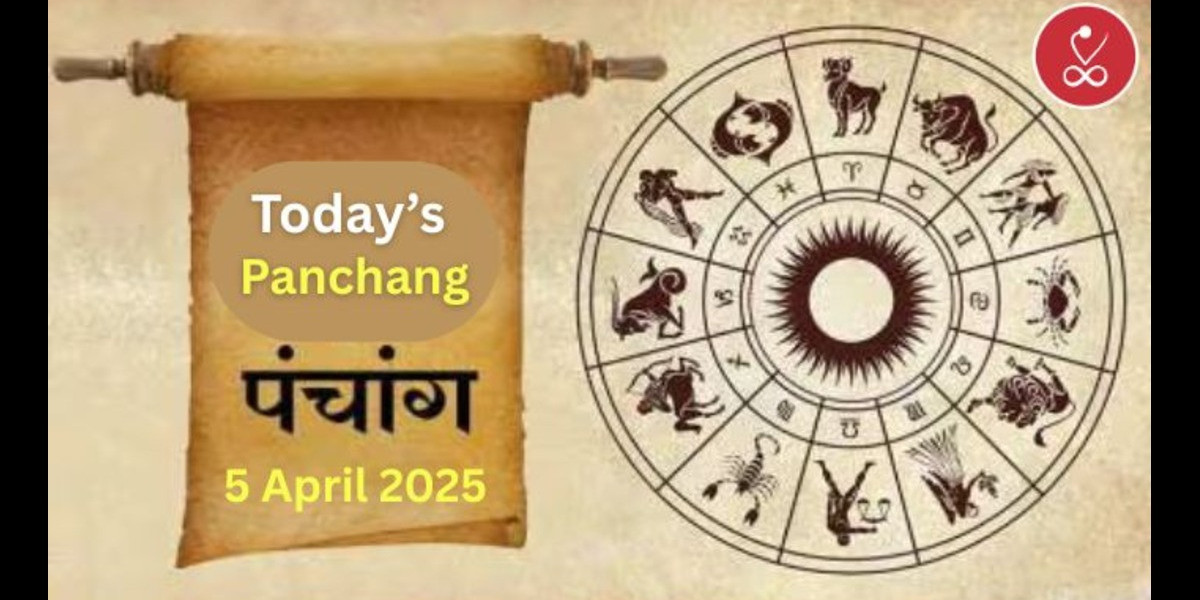What is Panchang?
Panchang is a Hindu calendar that provides important astrological details used for religious, cultural, and daily life activities. The word "Panchang" comes from Sanskrit:
Pancha (पञ्च) – Five
Ang (अंग) – Parts
Thus, Panchang consists of five key elements: Tithi (Lunar Day), Vara (Weekday), Nakshatra (Star Constellation), Yoga, and Karana.
The Five Components of Panchang
1. Tithi (Lunar Day)
The time taken by the Moon to move 12° ahead of the Sun is called a Tithi.
There are 30 Tithis in a lunar month, divided into two Pakshas (fortnights):
Shukla Paksha (Waxing Moon) – from Amavasya (New Moon) to Purnima (Full Moon)
Krishna Paksha (Waning Moon) – from Purnima to Amavasya
Each Paksha has 15 Tithis:
Pratipada (1st)
Dwitiya (2nd)
Tritiya (3rd)
Chaturthi (4th)
Panchami (5th)
Shashthi (6th)
Saptami (7th)
Ashtami (8th)
Navami (9th)
Dashami (10th)
Ekadashi (11th)
Dwadashi (12th)
Trayodashi (13th)
Chaturdashi (14th)
Purnima (Full Moon) / Amavasya (New Moon)
Importance:
Determines festival dates, fasting (vrat), and auspicious events.
Ekadashi is significant for fasting.
Amavasya and Purnima are important for rituals.
2. Vara (Weekday)
Hindu days start from sunrise to the next sunrise. The seven days of the week are:
Ravivara (Sunday) – Sun (Surya)
Somavara (Monday) – Moon (Chandra)
Mangalavara (Tuesday) – Mars (Mangal)
Budhavara (Wednesday) – Mercury (Budh)
Guruvara (Thursday) – Jupiter (Guru)
Shukravara (Friday) – Venus (Shukra)
Shanivara (Saturday) – Saturn (Shani)
Importance:
Determines which planets influence the day.
Used for selecting auspicious events like marriages and new ventures.
3. Nakshatra (Lunar Constellation)
The Moon moves through 27 Nakshatras (star constellations) every month. List of Nakshatras:
Ashwini
Bharani
Krittika
Rohini
Mrigashira
Ardra
Punarvasu
Pushya
Ashlesha
Magha
Purva Phalguni
Uttara Phalguni
Hasta
Chitra
Swati
Vishakha
Anuradha
Jyeshtha
Moola
Purvashada
Uttarashada
Shravana
Dhanishta
Shatabhisha
Purva Bhadrapada
Uttara Bhadrapada
Revati
Importance:
Each Nakshatra has different energies and influences different activities.
Used in birth charts (Kundali) and matchmaking.
Our More Vedic Tools: Check your Daily Horoscope
4. Yoga (Union of Sun and Moon)
Yoga is the angle between the Sun and the Moon. There are 27 Yogas, and each affects a person’s life and events.
Vishkambha
Priti
Ayushman
Saubhagya
Shobhana
Atiganda
Sukarma
Dhriti
Shoola
Ganda
Vriddhi
Dhruva
Vyaghata
Harshana
Vajra
Siddhi
Vyatipata
Variyan
Parigha
Shiva
Siddha
Sadhya
Shubha
Shukla
Brahma
Aindra
Vaidhriti
Importance:
Determines auspicious and inauspicious times for events.
5. Karana (Half of a Tithi)
A Karana is half of a Tithi. There are 11 Karanas, divided into two types:
Fixed Karanas (occur once per lunar month):
Kinstughna
Bava
Balava
Kaulava
Taitila
Garaja
Vanija
Vishti (Bhadra) – Inauspicious
Movable Karanas (repeat eight times in a lunar month):
9. Shakuni
10. Chatushpada
11. Nagava
Importance:
Determines the suitability of actions, such as travel, business, or ceremonies.
Our More Vedic Tools: Phone Number Numerology Calculator
On Saturday, April 5, 2025, the Panchang is as follows:
Sunrise and Sunset:
Sunrise: 6:19 AM
Sunset: 6:40 PM
Moonrise and Moonset:
Moonrise: 12:02 PM
Moonset: 2:10 AM (next day)
Tithi:
Shukla Paksha Ashtami until 7:26 PM, followed by Navami.
Nakshatra:
Punarvasu.
Yoga:
Atiganda until 8:03 PM, then Sukarman.
Karana:
Vishti (Bhadra) until 7:45 AM, followed by Bava.
Sun Sign:
(Surya Rashi): Meena (Pisces)
Moon Sign:
(Chandra Rashi): Mithuna (Gemini) until 11:25 PM, then Karka (Cancer).
Auspicious Timings:
Abhijit Muhurat: 11:59 AM to 12:49 PM.
Inauspicious Timings:
Rahu Kalam: 9:24 AM to 10:56 AM.
Yamaganda: 2:02 PM to 3:34 PM.
Gulika Kalam: 6:19 AM to 7:51 AM.
Festivals/Vrats:
Masik Durgashtami: This monthly observance dedicated to Goddess Durga falls on this day.
Ashoka Ashtami: A festival commemorating the victory of Goddess Durga over demons.
Chaitra Navratri Ashtami (Durga Ashtami): An important day during Chaitra Navratri, marked by rituals like Kanya Pujan.
Kanya Pujan Timings:
Muhurat Time: 11:59 AM to 12:49 PM.
Brahma Muhurat: 4:35 AM to 5:21 AM.
Morning Muhurat: 4:58 AM to 6:07 AM.
Conclusion:
Panchang is an essential part of Hindu culture, serving as a guide for religious, spiritual, and everyday activities. It is based on five key elements—Tithi, Vara, Nakshatra, Yoga, and Karana—which determine auspicious and inauspicious timings.
By following Today’s Panchang, individuals can select the best moments for important events like festivals, weddings, business ventures, and religious ceremonies, while avoiding inauspicious periods such as Rahu Kalam and Yamaganda.










